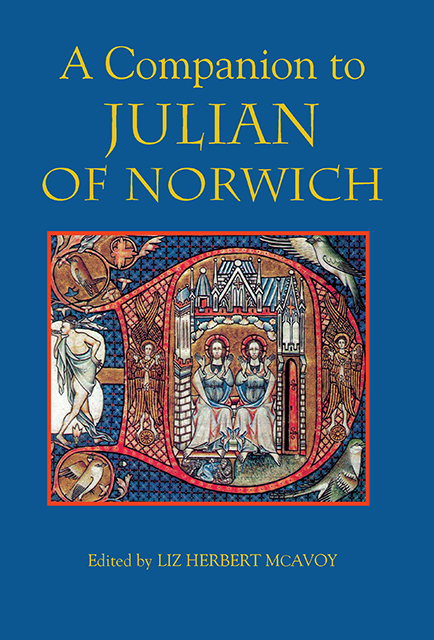11 - Julian of Norwich's ‘Modernist Style’ and the Creation of Audience
Published online by Cambridge University Press: 10 March 2023
Summary
Given the prominence of Julian of Norwich's writing in the canon of English literature, it is surprising how little we know about her audience in general. Neither historical nor manuscript evidence reveals much about her contemporary audience. To determine who read or heard her work, either as a written or oral composition, we need to consider such questions as who Julian was, who wrote down her story in its short form and then in its longer and more considered version, for whom she intended these versions, and who actually received them. Despite the fact that these questions yield only fragmentary and ambiguous answers, we can still learn about Julian's audience by looking carefully at the accounts themselves. Not only does Julian tell us to whom she addresses her work – to her ‘evencristen’ (although who these might be is itself not as clear as it might seem) – but also the idea of an audience is very much part of Julian’s formulation of her account of her visions. She describes an audience that is both general and universal rather than particular and individual and that imagined audience, everywhere inscribed in her accounts, is fundamental to the text’s meaning. Julian's goal, especially in her Short Text (also in a somewhat different way in the Long Text), is to recount a series of visions she had of Christ in such a way that we, the audience, experience those visions just as she did – and she invents a variety of stylistic strategies to achieve this goal. These stylistic techniques, as I shall argue, have much in common with ‘modernist’ style as defined by Eric Auerbach, and have the effect of dissolving the distance between both Julian and her vision and Julian and her audience. It is apt to call Julian's work a ‘Showing,’ the word she so often uses in her text, since Julian's modernist style, one shaped by her understanding of what it means to see, is committed above all to showing rather than telling her audience what she has seen.
Julian’s Actual Audience
Historical and manuscript evidence tell us so little about who Julian was and about her intended audience that we can only finally make conjectures about the actual audience of the accounts of her visions.
- Type
- Chapter
- Information
- A Companion to Julian of Norwich , pp. 139 - 153Publisher: Boydell & BrewerPrint publication year: 2008
- 3
- Cited by

